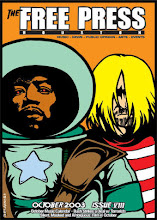The Children of Huang Shi

If you traveled the road to China in The Painted Veil and found the trip worthwhile then you might want to book a ticket to The Children of Huang Shi. Be forewarned, Children of Huang Shi never eclipses Painted Veil for drama and all around filmmaking, however like Veil it's a period piece set in China. At the onset of the Japanese invasion of China in the 1930 an inexperienced British reporter (Jonathan Rhys Meyers) finds himself surreptitiously photographing portions of the Nanking Massacre when he's captured and sentenced to die.
One of the problems, and the film's faults are problematic, of Children of Huang Shi lies in its exposition and plot twists. Characters will speak dialogue that's little better than a narration track explaining the events going on around us. Natch Meyers isn't going to get his head cut off in the first reel because he's the lead. When Yun-Fat Chow saves his life it's the biggest deus ex machina since Greek plays. Yet in a similar face off later in the film Chow doesn't engage the enemy.
Meyers finds refuge at an orphanage at the bequest of a fellow expatriate Radha Mitchell who administers medical treatment throughout the war torn landscape. She enters the story at different points and indeed picks up the pace but therein lies another of the film's quirks. Everyone else looks period, while Meyers and Mitchell look modern. One look at his spiky hair and you'd think he stepped out of Bend It Like Beckham.
There's no epic sweep, just the march from scene to scene. Each orphan death, each crisis is preceded by a wave of premonition that gives the whole affair a small screen consciousness. The ending is poignant and uplifting. The story is based on a true story with the usual character compositions and time jumbling.









